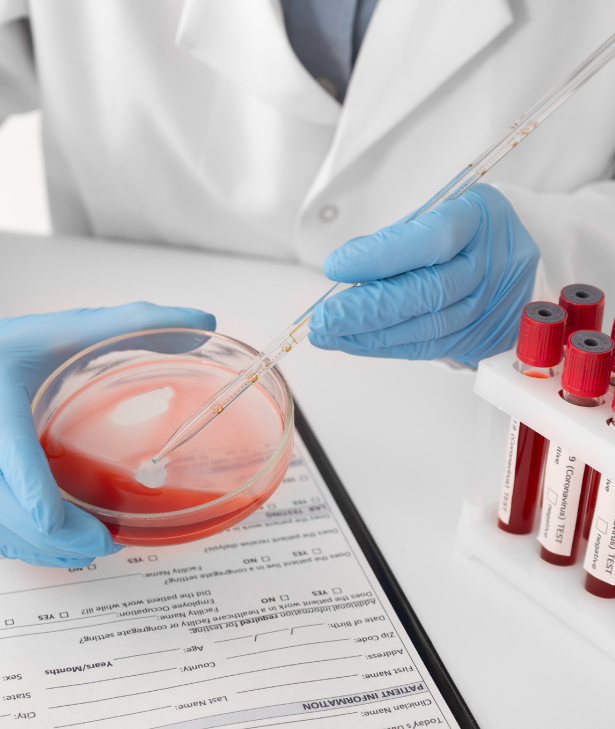
Blood Examination
This test counts the number of cells in the blood, such as red blood cells, white blood cells, and platelets. It is used to diagnose anemia, detect health problems that cause headaches, fever, fatigue, and various diseases, and monitor the effects of treatments and medications such as chemotherapy.
This is a type of blood test that measures the percentage of hemoglobin in the blood. This test is used to help diagnose blood disorders such as polycythemia vera or anemia. This test is performed using a blood sample, and the laboratory technician places the sample in a device called a sedimentator, which spins the blood at high speed in a test tube.
This test measures the number of platelets in the blood. This test is part of a complete blood count. This test is used to help diagnose blood disorders such as clotting disorders, bleeding, and bone marrow disorders.
This test measures the percentage of immature red blood cells in the blood, known as reticulocytes. This test gives the doctor an indication of the performance of the bone marrow, as a decrease or increase in the percentage of these cells indicates a number of health problems.
This is one of the blood tests that the doctor requests to determine the speed of blood clotting to stop bleeding that may be caused by various factors. The test determines the ability of platelets and their efficiency in forming a clot at the site of injury.
This is one of the tests that reveals an active infection in the body. It helps to diagnose inflammation and monitor the progression of the disease. The ESR rate helps to determine the extent of your body’s response to inflammation and monitor the effects of treatment.
This is the most common blood clotting test. It measures the prothrombin time, which is the time it takes for a blood clot to form. Prothrombin is a protein produced by the liver, and this substance combines with other substances to form a clot that forms when you have a bleed somewhere, or when a clot occurs inside the body.
This is a partial thromboplastin time test, and it measures the efficiency and quantity of certain substances in the blood. Therefore, it can measure the ability of the patient’s body to form a blood clot or not. It is often requested with the PT test.
This is a laboratory medical test that is used to identify the antigens present on the surface of red blood cells, which determine the blood type. Routine blood typing includes identifying the ABO blood type and the Rhesus blood type. It is performed before blood transfusion to ensure that the blood donor is compatible. It is also used to help diagnose hemolytic disease of the newborn, which is a medical condition caused by incompatibility of blood types between the mother and her child.
This test analyzes the enzyme G6PD, which helps to protect red blood cells from some toxic metabolic byproducts. Its deficiency in red blood cells leads to the destruction or breakdown of red blood cells at a rate greater than normal.
Hemoglobin electrophoresis allows the separation of different types of hemoglobin in the blood by varying their migration rate in an electric field, and it is performed when there is a suspicion of one of the forms of hemoglobinopathy.
This test measures the level of fibrinogen in the plasma. It is one of the factors that help to clot blood. When a bleed occurs, the blood forms a clot or clot in response to the bleed with the help of clotting factors. When there is a problem with fibrinogen, it may cause excessive bleeding.


